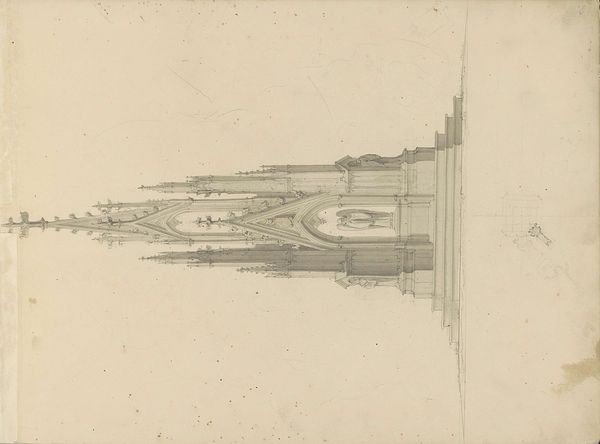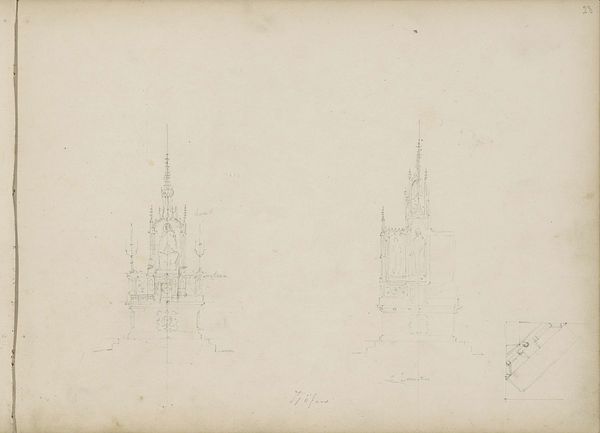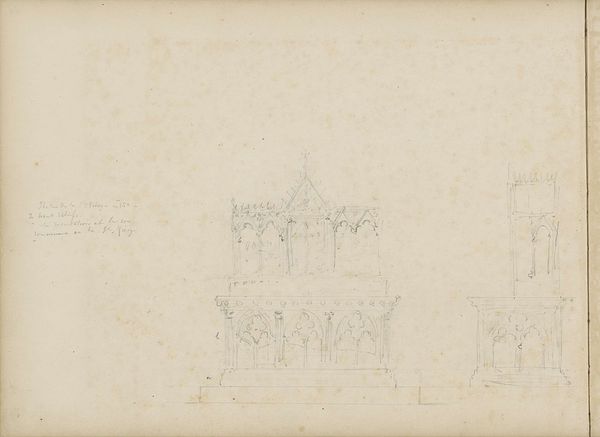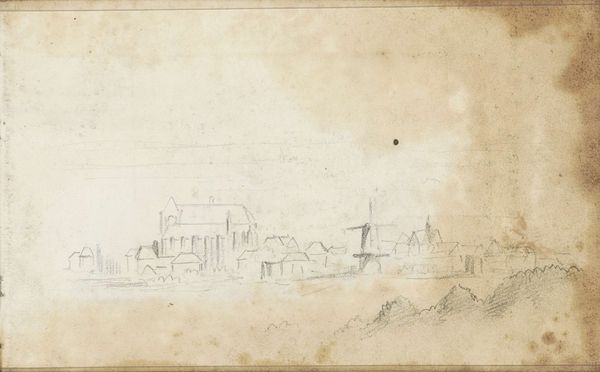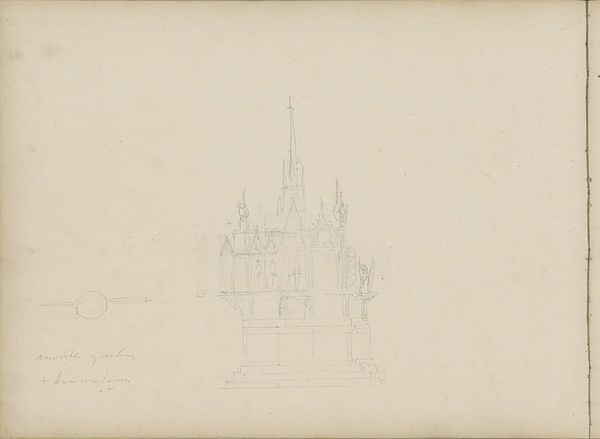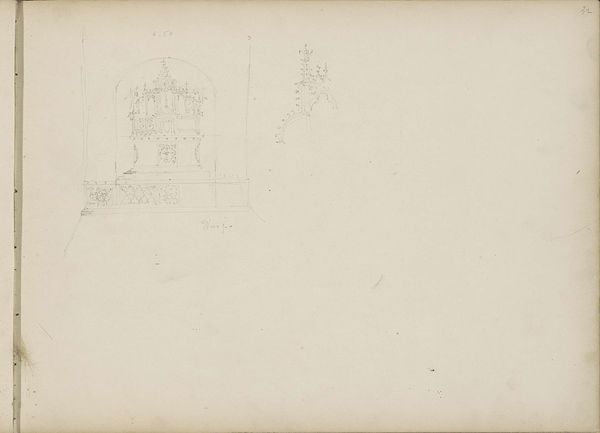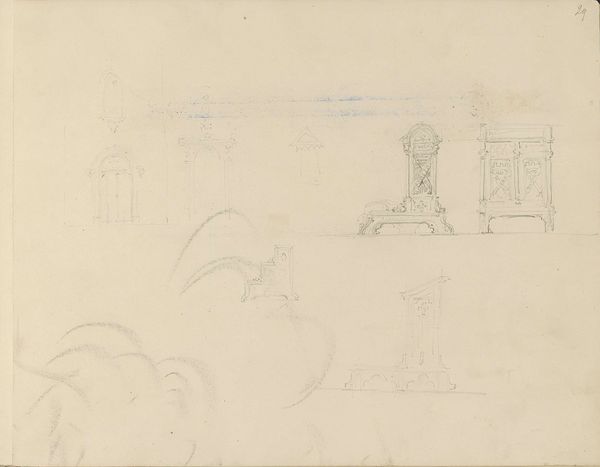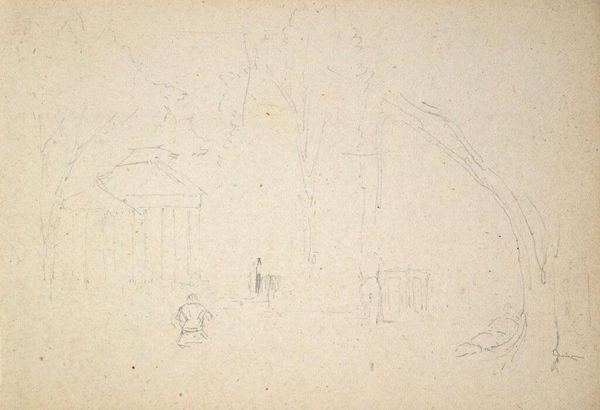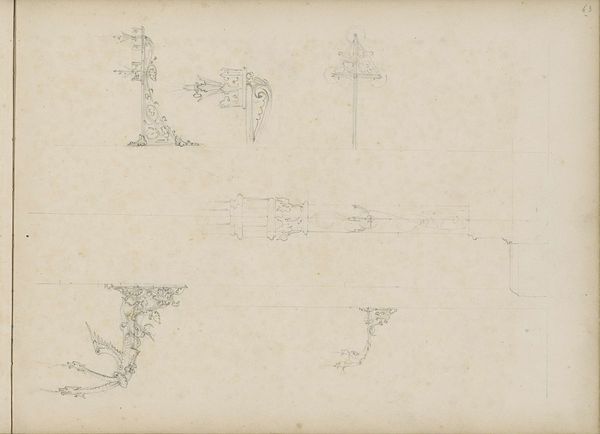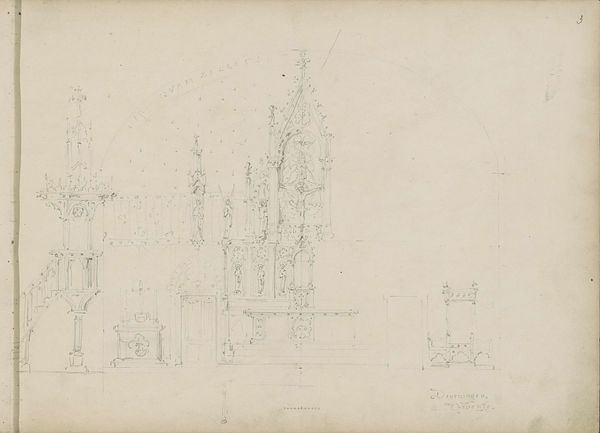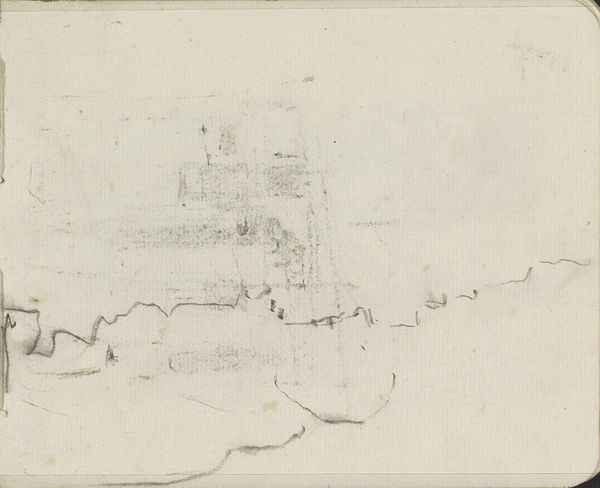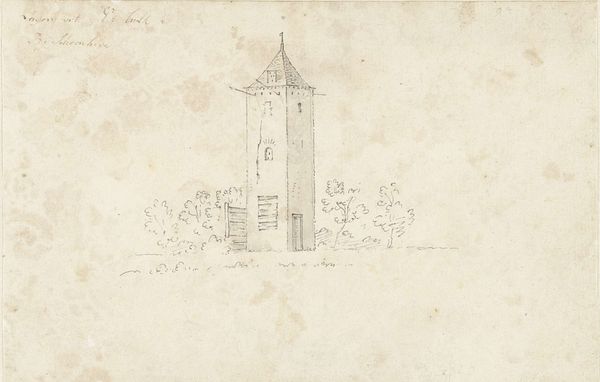
drawing, paper, pencil, architecture
#
drawing
#
paper
#
geometric
#
pencil
#
history-painting
#
architecture
#
realism
Copyright: Rijks Museum: Open Domain
Editor: This is "Altaar en plattegrond," a pencil drawing on paper by Pierre Joseph Hubert Cuypers, made between 1857 and 1859. It feels quite technical, like an architect's initial sketch. What do you see when you look at this piece? Curator: I see a potent illustration of artistic labour embedded within architectural planning. Consider the physical effort Cuypers expended to realize his vision, the specific paper and pencil employed. These materials weren't neutral; they were products of 19th-century industrial processes, linking this "high art" drawing to wider systems of resource extraction and commodity culture. How does recognizing the materiality influence your perception of the drawing as "technical?" Editor: I suppose the deliberate use of pencil and the precision of the lines contribute to its technical feel, but I didn't really consider where the paper or pencil came from. Curator: Exactly. The realism is evident not merely in its representation of an altar, but also in how it exposes the conditions of its making. Cuypers wasn’t just designing an aesthetic object; he was participating in networks of production and consumption. His art relied on industries which had profound social implications for laborers. Editor: That’s a compelling way to view it. So, by focusing on the materials, you're suggesting that this drawing provides a lens onto the social and economic systems of the time? Curator: Precisely. Art, as an activity, never occurs in a vacuum; and, like architecture, this sketch participates in concrete material processes, whether Cuypers intends that relationship or not. It shifts the conversation beyond aesthetics, making us think about the broader context surrounding artistic production in the mid-19th century. Editor: I’ve never thought of art quite this way before, viewing it through the lens of production and consumption. Curator: I’m glad it's broadened your perspective. I will need to keep that in mind going forward, too.
Comments
No comments
Be the first to comment and join the conversation on the ultimate creative platform.
